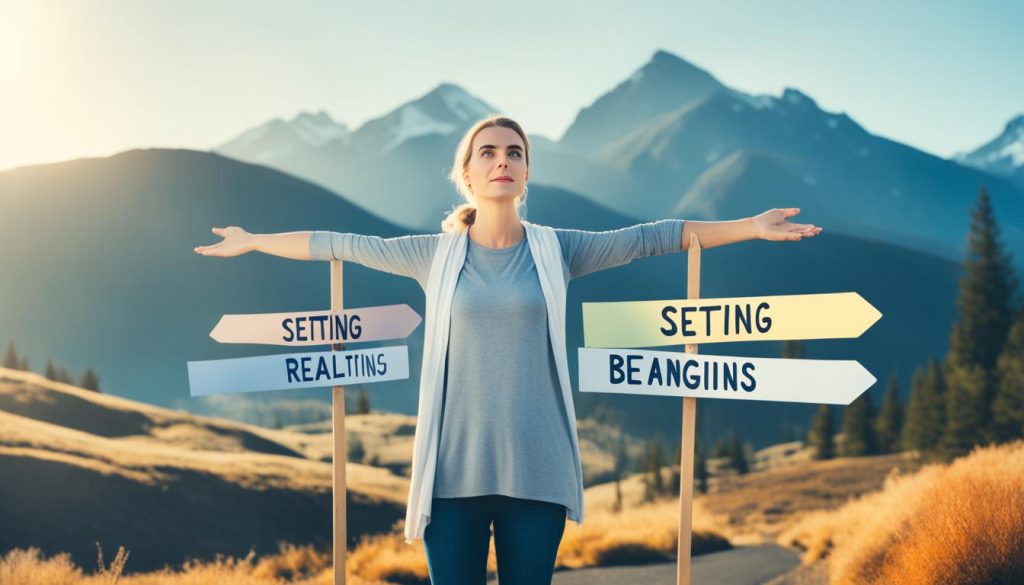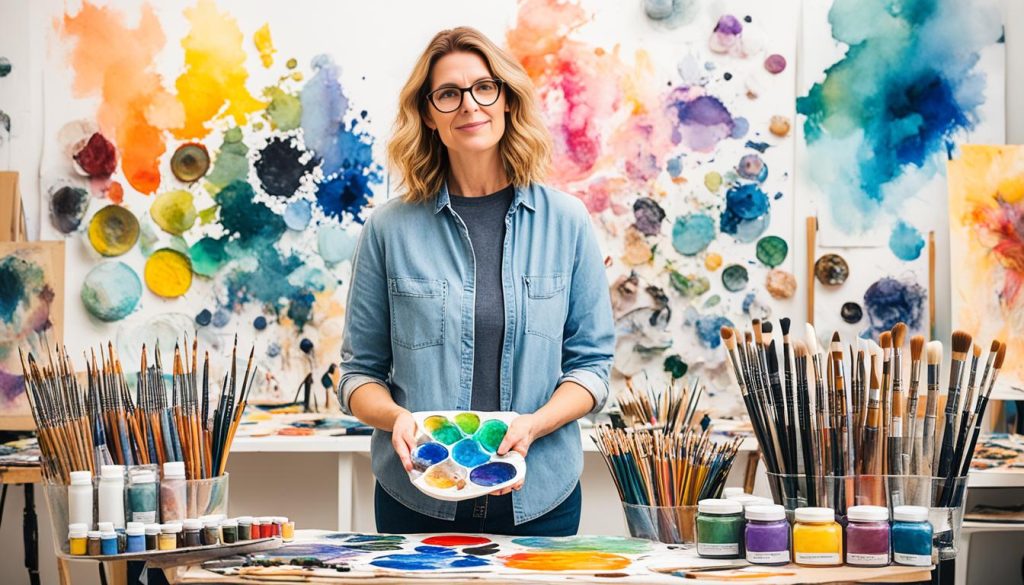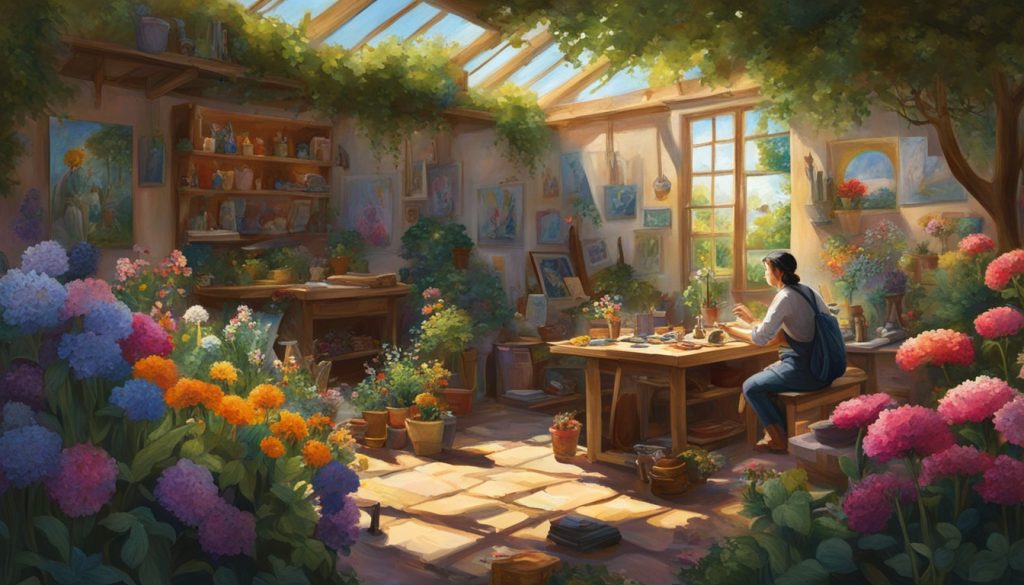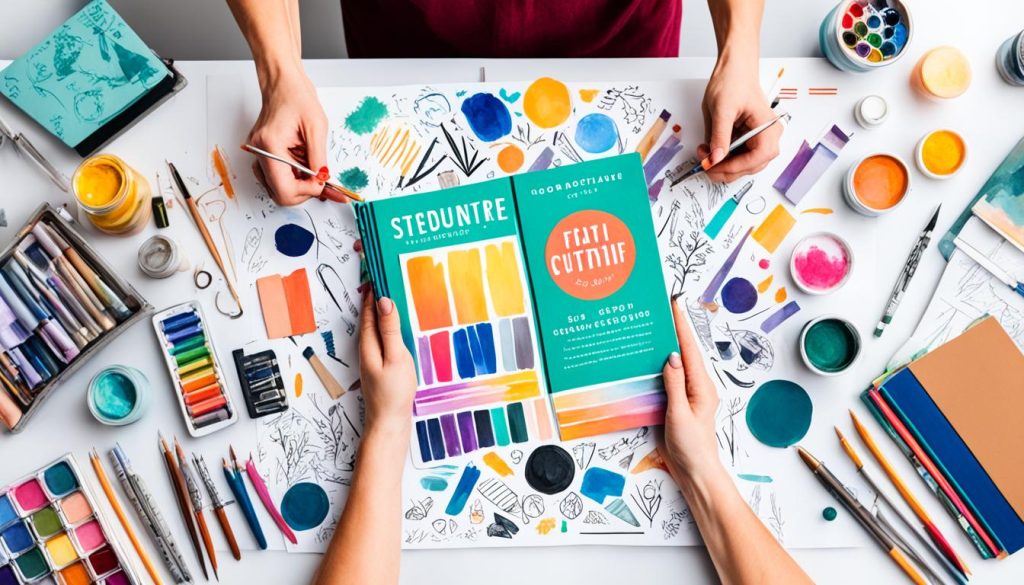- 1. Embracing Your Artistic Calling
- 2. Setting Realistic Goals and Expectations
- 3. Nurturing Creative Talent
- 4. Exploring Artistic Mediums and Styles
- 5. Building a Solid Foundation
- 6. Fostering Creativity and Inspiration
- 7. Networking and Community Building
- 8. Marketing and Promotion Strategies
- 9. Embracing Continuous Learning
- 10. Perseverance and Resilience
- 11. Balancing Art and Life
- 12. Conclusion
- 13. FAQ
- 13.1 How can I identify my unique creative voice as an artist?
- 13.2 How do I overcome fears and doubts that may hold me back as an artist?
- 13.3 What is the importance of setting realistic goals and managing expectations as an artist?
- 13.4 How can I create a supportive environment to nurture my creative talent?
- 13.5 Why is it important to explore different artistic mediums and styles?
- 13.6 What are the key elements of building a solid foundation as an artist?
- 13.7 How can I foster creativity and inspiration in my artistic practice?
- 13.8 Why is networking and building a supportive community important for artists?
- 13.9 What marketing and promotion strategies can help artists showcase their work?
- 13.10 Why is embracing continuous learning crucial for artists?
- 13.11 How can artists develop perseverance and resilience in their creative journey?
- 13.12 How can artists balance the demands of an artistic career with everyday life?
- 14. Source Links
As an aspiring artist, the journey of nurturing your creative talents and finding the right artistic path can be both exhilarating and daunting. Your creative aspirations hold the power to unleash your potential, inspire imagination, and cultivate innovation. However, navigating the complexities of developing artistic skills, encouraging self-expression, and stimulating creative thinking can be a significant challenge. This article aims to provide you with a comprehensive guide on how to foster creativity, mentor artistic minds, and promote creative confidence, empowering you to make informed decisions and cultivate your unique creative voice.
Key Takeaways
- Identify your unique creative voice and overcome fears and doubts to embrace your artistic calling.
- Set realistic goals and manage expectations to balance your career aspirations and skill development.
- Cultivate a supportive environment and seek mentorship to nurture your creative talent.
- Explore diverse artistic mediums and styles to find your preferred creative outlet.
- Build a solid foundation by mastering fundamental skills and developing a consistent practice.
Embracing Your Artistic Calling
To fully embrace your artistic calling, it’s crucial to first identify your unique creative voice. This involves deep self-reflection, understanding your personal strengths, preferences, and distinctive style. By nurturing your creative talents and fostering your imagination, you can unlock the potential that lies within you, allowing your artistic skills to shine.
Identifying Your Unique Creative Voice
As an artist, your creative voice is the essence of your artistic expression. It’s what sets you apart and allows you to cultivate innovation in your work. Take the time to explore your preferred mediums, experiment with different techniques, and encourage self-expression. By mentoring artistic minds and stimulating creative thinking, you can gradually discover and refine the unique qualities that define your artistic identity.
Overcoming Fears and Doubts
The journey of embracing your artistic calling can often be accompanied by fears and doubts. It’s natural to experience moments of uncertainty, whether it’s the fear of failure or a lack of confidence in your abilities. However, it’s important to promote creative confidence and unleash your potential. Embrace a mindset of desire and discipline, and take action to turn your creative dreams into reality. Organize your workspace, utilize art organizational software, and seek feedback from fellow artists to stay focused and motivated on your artistic path.
Setting Realistic Goals and Expectations
As you embark on your artistic journey, it’s crucial to set realistic goals and manage your expectations. By nurturing your creative talent and fostering your creativity, you can cultivate innovation and inspire ideas that will drive your progress.
Defining Short-Term and Long-Term Objectives
Start by breaking down your aspirations into two categories: career goals and skill development objectives. Your career goals might include entering prestigious art exhibitions, pursuing gallery representation, or gaining recognition within the industry. On the other hand, your technical objectives should focus on improving your craft through practices like working with accomplished artists, studying art books, and diligently practicing.
Balancing Career Aspirations and Skill Development
It’s important to strike a balance between these two types of goals and continuously evaluate and adjust them throughout your artistic journey. Remember, your technical skill development lays the foundation for achieving your career aspirations. By cultivating creativity and stimulating originality, you can nurture your creative talent and foster your creativity, ultimately cultivating innovation in your work.
To keep your goals top of mind and stay motivated, consider making a visual note of them in your studio or sketchbook. This practice can help you track your progress and maintain a clear sense of direction on your talent development and creative expression path.

Nurturing Creative Talent
Developing and nurturing your creative talent is a fundamental step in your artistic journey. This process involves cultivating a supportive environment and seeking guidance from experienced mentors. By intentionally fostering creativity and stimulating originality, you can unlock your full potential and inspire imagination within your work.
Cultivating a Supportive Environment
Creating a dedicated space for your creative pursuits is essential for nurturing creative talent. Whether it’s a well-equipped studio or a cozy corner in your home, this environment should feel conducive to fostering creativity and cultivating innovation. Surround yourself with inspirational materials, tools, and resources that fuel your passion and unleash potential.
Connecting with like-minded artists can also significantly contribute to your creative growth. Developing artistic skills and encouraging self-expression often thrive within a supportive community. Seek out local art groups, attend workshops, or engage in online forums to mentor artistic minds and stimulate creative thinking. These interactions can provide valuable feedback, inspire new ideas, and promote creative confidence.
Seeking Mentorship and Guidance
Identifying and connecting with experienced mentors can be a transformative experience in nurturing creative talent. These seasoned artists can offer invaluable guidance, share their knowledge, and help you navigate the challenges of an artistic career. Whether through formal mentorship programs or informal relationships, tapping into the expertise of others can significantly cultivate creativity and inspire imagination.
Engaging with mentors allows you to learn from their successes and failures, gaining a deeper understanding of the creative process. Their insights can help you refine your artistic skills, expand your creative horizons, and foster creativity in a way that aligns with your unique vision and aspirations.
Exploring Artistic Mediums and Styles
As an artist, the journey of discovering your preferred creative outlet is a thrilling and transformative process. By experimenting with a diverse array of techniques and materials, you can unlock new possibilities for self-expression and innovation. This exploration phase is not just about finding the right fit, but also about stimulating your creative thinking and expanding your artistic horizons.
Experimenting with Different Techniques
Embrace the spirit of curiosity and fearlessness as you delve into different artistic mediums and styles. Whether it’s experimenting with bold brushstrokes in painting, the fluidity of watercolor, the tactile experience of sculpture, or the digital realm of graphic design, each new technique you explore can inspire your imagination and develop your artistic skills. Allow yourself to play, experiment, and discover unexpected creative paths.
Finding Your Preferred Creative Outlet
As you navigate the rich tapestry of artistic expression, you’ll gradually begin to identify the mediums and styles that resonate most with your unique creative voice. By trying out different approaches, you’ll gain a deeper understanding of your strengths, preferences, and the way you prefer to communicate through your art. This process of self-discovery will not only encourage your self-expression but also mentor your artistic mind as you promote your creative confidence.

Building a Solid Foundation
Developing your artistic skills is a journey of continuous growth and refinement. At the core of this journey lies the importance of building a solid foundation – one that will support and propel your creative aspirations. This foundation is built upon the mastery of fundamental skills and the cultivation of a consistent practice.
Mastering Fundamental Skills
As an artist, it’s essential to focus on developing core competencies such as drawing, color theory, and composition. These fundamental skills serve as the building blocks for your artistic expression, allowing you to communicate your vision with clarity and confidence. Invest time in honing these technical abilities through dedicated study, regular practice, and a willingness to experiment.
Whether you’re a seasoned artist or just starting your creative journey, mastering the fundamentals is a crucial step in stimulating creative thinking and promoting creative confidence. By developing a deep understanding of these core principles, you’ll unlock new avenues for encouraging self-expression and mentoring artistic minds.
Developing a Consistent Practice
Alongside the mastery of fundamental skills, a consistent, disciplined practice is essential for developing artistic skills and nurturing creative talent. Establish a routine that allows you to engage with your art on a regular basis, even if it’s for short periods of time. Consistent practice, talent development, and a willingness to encourage creativity will help you steadily improve your craft and cultivate innovation in your work.
Remember, the path of an artist is not always linear, and not every piece you create will be a masterpiece. Embrace the learning process, celebrate your progress, and trust that creative thinking and a stimulating practice will lead you to new heights of self-expression and confidence.
Fostering Creativity and Inspiration
As an artist, fostering creativity and inspiration is a continuous journey of exploration and discovery. The key is to approach this process with an open and curious mindset, allowing yourself to be captivated by the world around you. Observing the intricate details of nature, immersing yourself in the works of inspiring artists, and engaging in creative exercises can all serve as powerful catalysts for stimulating creative thinking and promoting creative confidence.
Take time to develop your artistic skills and encourage self-expression through experimentation with different mediums and techniques. Embrace the spirit of innovation by stepping outside your comfort zone and trying something new. Whether it’s experimenting with vibrant colors, experimenting with unconventional materials, or exploring mentoring artistic minds, the process of inspiring imagination can unlock a world of possibilities.
Surround yourself with creative inspiration from various sources, such as nature, art museums, or the work of fellow artists. Allow yourself to be captivated by the beauty and complexity of the world, and let it fuel your own creative thinking and artistic aspirations. By cultivating a mindset of curiosity and exploration, you’ll discover new avenues for your self-expression and uncover unexpected creative breakthroughs.

Networking and Community Building
As an artist, nurturing a supportive network and engaging with your creative community can be immensely beneficial.
By connecting with fellow artists, you can cultivate meaningful relationships that foster self-expression, stimulate creative thinking, and promote confidence in your abilities. These connections can provide valuable feedback, inspiration, and a sense of camaraderie that can help you overcome challenges and stay motivated on your artistic journey.
Connecting with Fellow Artists
Seek out opportunities to connect with other artists, whether through online platforms, local art groups, or professional organizations. These communities can serve as a platform to share your work, learn from experienced practitioners, and engage in discussions that challenge and inspire your creative thinking. By actively participating in these networks, you can expand your horizons, discover new artistic possibilities, and build lasting relationships with like-minded individuals who understand the joys and struggles of the creative life.
Participating in Local Art Events
Engaging with your local art community by attending exhibitions, workshops, or artist talks can be a powerful way to develop your skills, gain exposure, and learn from seasoned professionals. These events not only provide opportunities to showcase your work and potentially connect with galleries or collectors but also offer insights into the industry that can help you navigate your own creative path. By immersing yourself in the vibrant culture of your local art scene, you can foster your imagination, cultivate innovation, and further develop your talent as an artist.
Marketing and Promotion Strategies
Effective
marketing and promotion strategies
are essential for artists to showcase their work and
build a successful career
. One powerful avenue to explore is
leveraging social media
platforms to
connect with potential collectors, curators, and art enthusiasts
. By creating a strong online presence and
engaging with the art community
, you can significantly increase your
visibility and reach
.
Leveraging Social Media
Social media offers a dynamic and cost-effective way to promote your artistic work. Platforms like Instagram, Facebook, and Twitter provide opportunities to share your creations, engage with your audience, and build a loyal following. Experiment with visually captivating content, insightful captions, and interactive features to cultivate a unique brand identity and attract the attention of your target market.
Pursuing Exhibition and Gallery Opportunities
In addition to your digital presence, pursuing exhibition and gallery opportunities can be a transformative step in gaining recognition, expanding your audience, and potentially securing representation or sales. Research local, regional, and national art shows, competitions, and gallery representations that align with your artistic style and career goals. Carefully curate your portfolio, craft artist statements, and network with industry professionals to increase your chances of being selected for these valuable exposure opportunities.
Remember, striking a balance between self-promotion and the continued development of your artistic skills and practice is crucial for long-term success. Stay dedicated to honing your craft while simultaneously showcasing your talent and building a strong artistic brand.

Embracing Continuous Learning
As an artist, embracing a mindset of continuous learning is paramount to your creative growth and development. By consistently seeking out new educational opportunities, you can expand your skills, explore innovative techniques, and keep your artistic practice fresh and engaging.
Attending Workshops and Classes
Participating in workshops and classes, whether in-person or online, can be a powerful way to deepen your understanding of your craft. These educational experiences often provide hands-on instruction, access to expert mentors, and the chance to collaborate with fellow artists. From honing your drawing fundamentals to experimenting with cutting-edge digital media, there are countless workshop options to suit your talent development and nurturing creative talent goals.
Exploring New Techniques and Styles
Stepping outside your comfort zone and fostering imagination by exploring new artistic techniques and styles can be a transformative experience. Whether it’s trying your hand at printmaking, delving into the world of inspiring ideas and cultivating creativity through abstract painting, or mastering the art of stimulating originality through digital illustration, embracing a spirit of encouraging creativity and fostering creativity can lead to remarkable breakthroughs in your work.

The journey of an artist is one of continuous growth and discovery, and by embracing a lifelong learning mindset, you can unlock your full creative potential, stay inspired, and keep your artistic voice evolving and thriving.
Perseverance and Resilience
Cultivating creativity, stimulating originality, and nurturing your creative talent is a journey filled with both triumphs and challenges. The artistic path is often paved with obstacles, setbacks, and moments of self-doubt or creative blocks. However, it is your unwavering perseverance and resilience that will propel you forward, empowering you to overcome these hurdles and maintain your motivation and passion.
Overcoming Artistic Blocks
Every artist faces periods of creative stagnation or artistic blocks. During these times, it’s crucial to develop strategies that will help you push through the uncertainty and rediscover your inspiration. Experiment with cultivating innovation by exploring new mediums, techniques, or subject matter. Seek inspiration from diverse sources, such as nature, travel, or the works of other artists you admire. By fostering creativity and embracing a spirit of exploration, you can break through the barriers and reignite your artistic passion.
Maintaining Motivation and Passion
Sustaining your motivation and passion for your art is essential, even in the face of challenges. Remind yourself of the unleashing potential that drew you to this creative path in the first place. Celebrate the small victories, whether it’s completing a new piece or receiving positive feedback. Surround yourself with a nurturing creative talent community of fellow artists who can provide encouragement and inspiration. By fostering creativity and embracing self-compassion, you can navigate the ups and downs of the artistic journey with resilience and a renewed sense of purpose.
Balancing Art and Life
As an artist, striking a harmonious balance between your creative pursuits and everyday responsibilities can be a constant challenge. However, with the right time management strategies and a focus on self-care, you can unlock your unleashing potential and sustain your artistic journey while maintaining a healthy work-life balance.
Time Management Strategies
One of the keys to balancing art and life is effectively managing your time. Compartmentalize your art-making into dedicated, distraction-free blocks, treating this as your creative “dessert” time. Protect this sacred space from the demands of daily chores, errands, and other obligations. Experiment with tools like schedules, to-do lists, and time-tracking apps to ensure you prioritize your inspiring imagination and developing artistic skills.
Prioritizing Self-Care and Well-being
Equally important is nurturing your overall well-being to support your artistic practice. Set boundaries and make time for self-care activities that encourage self-expression and mentoring artistic minds. This could include practices like meditation, exercise, or simply taking regular breaks to recharge. By stimulating creative thinking and promoting creative confidence, you’ll be better equipped to overcome creative blocks and maintain your passion for your craft.
Conclusion
In conclusion, this article has provided you with a comprehensive guide on how to nurture your creative talents and choose the right artistic path to fulfill your aspirations. By embracing your artistic calling, setting realistic goals, nurturing your talent, exploring diverse mediums and styles, building a solid foundation, fostering creativity and inspiration, networking within the art community, implementing effective marketing strategies, embracing continuous learning, developing perseverance and resilience, and balancing your art with your overall well-being, you can unlock your full potential and make meaningful contributions to the creative landscape.
The key is to approach your artistic journey with a mix of discipline, passion, and a willingness to adapt and grow, ultimately allowing your unique creative voice to shine through. By following the strategies and insights outlined in this article, you can unleash your potential, inspire imagination, develop your artistic skills, encourage self-expression, mentor artistic minds, stimulate creative thinking, and promote creative confidence – all essential elements for a thriving and fulfilling artistic career.
FAQ
How can I identify my unique creative voice as an artist?
To identify your unique creative voice, you need to understand your personal strengths, preferences, and artistic style. Reflect on the subjects, themes, and techniques that resonate with you the most, and experiment to discover your preferred mediums and modes of expression.
How do I overcome fears and doubts that may hold me back as an artist?
Overcoming fears and doubts requires developing a strong desire and discipline for your craft. Take action and make progress, rather than just dreaming about your goals. Organize your workspace, use art organizational tools, and seek feedback from fellow artists to stay motivated and focused.
What is the importance of setting realistic goals and managing expectations as an artist?
Setting realistic goals is crucial for artists. Separate your goals into two categories: career aspirations and technical skill development. Balance these objectives and continuously evaluate and adjust them throughout your artistic journey. Keeping your goals visually present can help you stay motivated and on track.
How can I create a supportive environment to nurture my creative talent?
Cultivating a supportive environment is key. Make time and space for your creative pursuits, whether that’s a dedicated studio or a cozy corner at home. Connect with fellow artists, join local art communities, and participate in events to foster creativity and gain valuable feedback and inspiration. Seek out mentors to guide you in developing your skills and navigating the challenges of an artistic career.
Why is it important to explore different artistic mediums and styles?
Exploring a variety of mediums and styles can lead to unexpected discoveries and help you refine your artistic voice. Experiment with different techniques and materials to find the creative outlets that best suit your interests, skills, and personal expression. This process of exploration can help you expand your creative horizons.
What are the key elements of building a solid foundation as an artist?
Building a solid foundation involves mastering fundamental skills, such as drawing, color theory, and composition, through dedicated practice and study. Consistently working on these core techniques, even if the final artworks are not masterpieces, is crucial for growth and improvement. Developing a regular, disciplined practice is key to honing your skills and achieving your artistic goals.
How can I foster creativity and inspiration in my artistic practice?
Fostering creativity and inspiration is an ongoing process. Actively seek out sources of inspiration, whether it’s through observing the world around you, studying the works of other artists, or engaging in creative exercises and experimentation. Cultivate a mindset of curiosity and exploration to keep your creativity nourished and dynamic.
Why is networking and building a supportive community important for artists?
Networking and connecting with fellow artists can provide valuable feedback, inspiration, and a sense of camaraderie that can help you overcome challenges and stay motivated. Participate in local art events, such as exhibitions, workshops, or artist talks, to expand your network, gain exposure, and learn from experienced professionals in the field.
What marketing and promotion strategies can help artists showcase their work?
Effective marketing and promotion strategies are essential for artists to connect with potential collectors, curators, and art enthusiasts. Leverage social media platforms to build a strong online presence and engage with the art community. Pursue exhibition and gallery opportunities to gain recognition, expand your audience, and potentially secure representation or sales.
Why is embracing continuous learning crucial for artists?
Embracing continuous learning is essential for artists to grow and evolve in their craft. Attend workshops, classes, and other educational opportunities to expand your knowledge and skills, explore new artistic techniques, experiment with different mediums, and delve into art history and theory. Adopt a lifelong learning mindset to keep your work fresh and innovative.
How can artists develop perseverance and resilience in their creative journey?
Perseverance and resilience are crucial qualities for artists. Maintain motivation and passion, even in the face of challenges, setbacks, and creative blocks. Develop strategies to overcome artistic blocks, such as exploring new mediums or seeking inspiration from various sources. Practice self-compassion and understand that not every artwork will be a masterpiece, as the learning process is just as valuable as the final product.
How can artists balance the demands of an artistic career with everyday life?
Balancing the demands of an artistic career with everyday life can be challenging. Implement time management strategies, such as compartmentalizing art-making into manageable time slots and protecting that creative “dessert” time from distractions. Prioritize self-care and well-being to ensure you have the physical and mental resources to sustain your artistic practice.
Source Links
- https://www.outdoorpainter.com/setting-art-goals/
- https://www.belindadelpesco.com/how-to-be-an-artist.html/
- https://www.artistsnetwork.com/art-mediums/a-pastelists-new-year-resolutions-setting-creative-goals/
